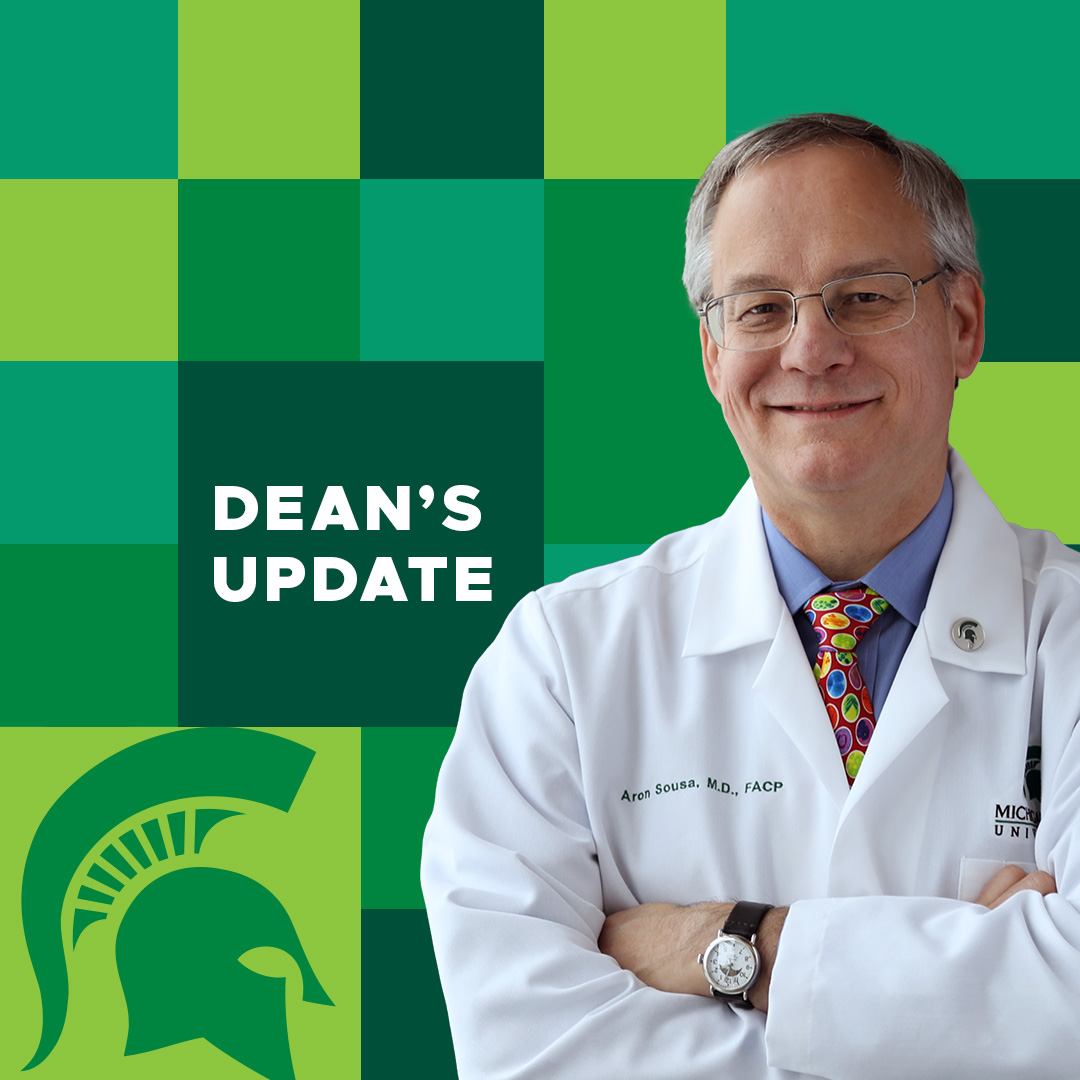Dean's Update
February 14, 2025 - Aron Sousa, MD
Friends,
 Last weekend and into this week, universities and professional societies across the country, in blue states and red states, all mobilized to oppose the reduction in NIH funding announced by the administration. For those of you who have not thought much about NIH funding, here is the shortest version I can muster. About 18% of NIH proposals, from across all institutes, are funded, so getting a grant means winning a tough competition.
Last weekend and into this week, universities and professional societies across the country, in blue states and red states, all mobilized to oppose the reduction in NIH funding announced by the administration. For those of you who have not thought much about NIH funding, here is the shortest version I can muster. About 18% of NIH proposals, from across all institutes, are funded, so getting a grant means winning a tough competition.
Once you get the grant, the NIH will reimburse the university for the expenses of the experiments (for example, pipets and agar or the middle-class salary of technicians and support for graduate students who work in the lab). Unlike some foundations, the NIH does not allow us to include in the grant the institutional costs for space; support personnel for research, such as financial and administrative staff; utility costs such as ventilation, heat, air conditioning, water and lighting; specialized research core facilities; research security; regulation compliance; and grant administration. Instead, institutions are reimbursed for these costs with a separately negotiated percentage of the grant. For example, in Grand Rapids, we are reimbursed for these “facilities and administrative (or indirect) costs” including lighting the lab, the cost of the space, and compliance with safety and fraud regulations. These funds also reimburse us for the costs of our required ethics boards, biowaste and chemical waste disposal, and radiation safety officers.
The NIH only pays us back for our expenses. We do not make money on NIH projects; we hope to get our expenses covered. NIH funding has been so stable for so many years that the finances of the operations of the Grand Rapids Research Building are based on the federal reimbursement formula. Without this reimbursement, our building operations in Grand Rapids are not financially sustainable. The labs would literally go dark. This is true for labs across MSU and the nation.
I have faith that our government does not want lab buildings to go dark. They do want us to work on autism, cancer, Parkinson’s and Alzheimer’s, and I think Congress will come around to continuing its support of cutting-edge American research. We have great teams working on rare diseases in kids and the incredibly common condition of endometriosis in young women. Of course, this administration will have to let us use the word “women” or else we will be forced to study mortality in “pregnant people” and endometriosis in “non-men.” Egad, men.
Our research programs in Grand Rapids, Flint, Detroit, and East Lansing are economic engines for those communities. We even have NIH grants based in Traverse City and Southfield. If we are going to compete in the future of biotechnology, it makes every sense to continue to invest in the research we do in these communities. I have faith that cool heads will prevail, and we will not forfeit our substantial national investment in research to overseas powers.
Our own MIRACLE Center was one of the examples in the state led lawsuit to halt the NIH funding cuts. Across 22 counties in Michigan, our teams, which include Corewell Health and Henry Ford Health faculty as partners, are currently working with moms to prevent their injury and death during pregnancy and birth. For these rural counties, this study is the only service of its kind, which is why stopping funding was ruled to be an immediate, irreparable harm. The court ruling keeps us going, but it will be up to Congress to keep the labs and the moms of Michigan going.
This is Black History Month, and just on the southside of the Grand Rapids Research Center sits a statue of scientists Pearl Kendrick, Grace Eldering, and Loney Clinton Gordon. These three women pioneered a pertussis (whooping cough) vaccine. Pertussis killed thousands of children a year before there was an effective vaccine. Thank goodness for vaccines against childhood illnesses, because these vaccines have come from and delivered goodness.
One of the team, Loney Clinton Gordon, was a Michigan State College chemistry graduate and figured out how to culture strains of Bordetella pertussis that would be useful in the creation of a vaccine. She was a Black American and was blocked from entering the field of nutrition after graduation because of her race. Her fellow scientists were more interested in her talent than her color and found a place for her in the laboratory. Hers is a great story. The statues next to our building are part of Peter Secchia’s philanthropic legacy and recognize and celebrate the remarkable people of the city.
Serving the people with you,
Aron
Aron Sousa, MD, FACP
Dean, Michigan State University College of Human Medicine

